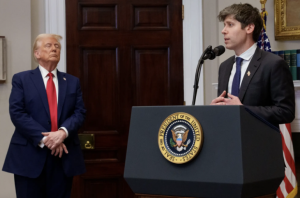Student led solutions to tackle environmental injustic
March 25, 2019
When students were asked if they lived within one mile of a freeway, or if anyone in their family has asthma, or were required to use hazardous materials at work, a majority of students stood.
This provided a visual as to how often and how many people are being affected by their environment in terms of their health.
Gentrification: Environmental Injustice, provided students an interactive example of what gentrification is.
These environmental impacts that affect the health of people can be linked to the changes in the environment as brought on by gentrification.
Elisa Serma, who led the event, defined it as, “ … a renovation of communities by upper and middle class families and that [renovation] causes the property to increase and it displaces low income people that already lived in those communities…”
The event was also led by Yoko Peters and co-facilitated by Assistant Professor Gabriel Valle in the Cross-Cultural Center on Thursday, March 14.
This event served as a space in which students learned and talked about how gentrification is an environmental injustice occurring in their communities.
Environmental injustice was explained in a Youtube video titled ‘Environmental Justice, Explained.’
“… say the city realizes it has an emissions problem… It comes up with a plan to reduce air pollution… The benefits of these programs are enjoyed by the communities that are already doing just fine, and the communities that were hurting from all that air pollution… they’re still hurting… That’s why why social justice is an environmental issue, too.”
Gentrification is the main cause to be found in the environmental injustice that exists in the communities of students.
“What environmental justice does, is that it ties together social justice and the environment. The same systems of power that destroy the environment… are still the same systems of power that destroy communities… part of environmental justice is… about dismantling or reconfiguring those systems of power,” said Professor Valle.
Serma said that part of the growth for social change and in turn environmental change also begins with discussion.
“This is something I wanted to know more of. I’m not an expert on the topic but providing open spaces to talk about it, and realizing it affects us… I think it’s really important because it drives you to want to do something about it,” she said.
Peters said they were inspired to take action in an Environmental Studies class and was encouraged to apply for the ASI Sustainable Project.
In being given this opportunity, Peters helped develop a program to give students mini towels and reusable bamboo cutlery to reduce paper towel waste and plastic utensil waste on campus, all of which were given at the event.
When asked if this program can be a strong solution for the campus, she said, “If many people participate in using it, it does. The actual data shows that if you don’t use paper on campus you can actually save 23 pounds per person per year.”
“The peer influence between students is bigger than what we are… This kind of event is actually encouraging us to participate in more sustainable actions,” said Peters.
For more events hosted by the the Cross-Cultural Center visit www.csusm.edu/ccc/events. The Cross-Cultural Center is located in USU 3400 and is open Monday through Thursday from 8:30 a.m. to 6:00 p.m. and Friday from 8:30 a.m. to 5:00 p.m.





